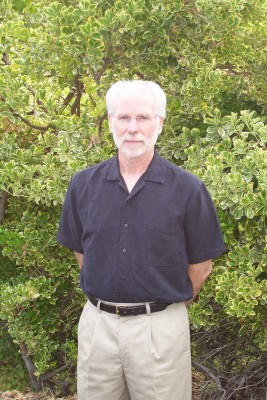Scribal Culture in Nineteenth Century Iceland
Matthew Driscollʼs View of Magnúsʼ Vanishing World
by Dr. Matthew Driscoll
Margaret and Richard Beck Lectures
University of Victoria
Article by Leif Nordholm
June 19, 2007

Who would guess that common Icelandic farmers were responsible for copying and preserving saga texts? Actually, it turns out to be a rich tradition and Magnús Jónsson (1835-1922) was among the most prolific of such farmer-scribes.
The Beck Fund was pleased to invite Dr. Matthew Driscoll, curator of the Arnamagnæan manuscript collection in Copenhagen, to the University of Victoria to lecture on this topic.
Driscoll finds the post-Gutenberg manuscript tradition fascinating: Even at the same time as people were printing texts, farmers in Iceland—ordinary people—were actually hand-copying and trading copies.
At the end of the tradition of farmer-scribes was Magnús Jónsson.
Magnús spent most of his life trying to preserve sagas. His twenty-volume collection, Fornmannasögur Norðurlanda (Sagas of the Ancient Men of the North) is held at the National Library in Iceland, the Landsbókasafn, to which he sold it in 1909. He did this after a fire at his house made him aware of their vulnerability. But he regretted the move later.
Magnús belonged to a dying breed: the world that he inhabited was indeed vanishing—and he knew it,
Driscoll comments, social changes led to the end of the evening wake, which was basically where people sat around reading to each other—this is what Icelanders did for six, seven hundred years to entertain each other. When they stopped doing that, then they didn’t need sagas anymore.
Driscoll likens the downfall of scribal culture to modern-day collectors of vinyl. Were Magnús alive today, he would have held onto his record collection while those around him bought CDs.
Magnús lived on a farm called Tjaldanes in the west of Iceland. He was an ordinary farmer with no formal education. He states in a preface that he was above the age of confirmation, roughly fourteen to sixteen years of age, when he began copying manuscripts. His scribal education started on fishing expeditions.
In Iceland, going out fishing is not like taking your rod and reel and going out and standing by the river. It means going for several months to one of the fishing stations,
Driscoll explains. When it was too windy to go out fishing, people would have to entertain each other by reading sagas.
Fornmannasögur Norðurlanda, each volume of which is exactly eight hundred pages long, contains a total of 162 sagas. Driscoll estimates that we have less than half of Magnús’ manuscripts; he could have produced as much as a hundred. He seems to have started very young, and as we saw, went on until he was eighty—it’s not actually impossible to have done this.
Magnús imitated printed books for the format of Fornmannasögur. He made title pages, and in the 1880s, he started including a table of contents with his work. Most of his volumes after 1888 contain prefaces, something no medieval manuscript includes.
His prefaces contain details about his works and his experiences creating them. From his prefaces, we can learn about the scribal network that Magnus was a part of. Magnús’ prefaces begin with the phrase: I first copied this saga.
He discusses where his stories came from: he may mention if the saga came from rímur (literally, rhymes), storytellers, or printed books. Sometimes he’d heard the story decades earlier. He regarded himself as part of living tradition, of equal authority to the printed page, which he adapted.
In Magnús’ opinion, it is acceptable to change the wording of a story, and in fact necessary, if the language is faulty. He referred to words as clothing—the clothing may change, but the story must stay the same.
Magnús’ interest in the legacy of farmer-scribes preserved an older tradition: the oral transmission of culture. There were no villages in Iceland at this time, only isolated farmsteads. But he wasn’t limited to simple farm life; as hrepstjori, it was his job to find homes for poor folk, from whom he may have learned stories. Apart from that he recalls living with his parents and hearing stories told by an old woman—perhaps a wandering widow who knew the old sagas.
Kveldvaka, the evening wake, was a time for stories in nineteenth-century Iceland. After the long twilight, when it was dark enough to light the lamps, kveldvaka began. Stories were told either by guests or a young man learning to read. This evening entertainment kept the family awake in the dark hours.
The oral and scribal stories that kept Icelandic culture alive faded in the twilight of Magnús’ time. In our rapidly changing world, this story is ubiquitous: progress
comes at a cost.